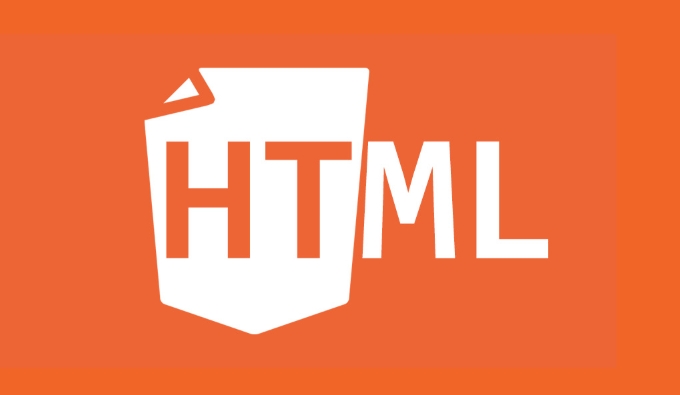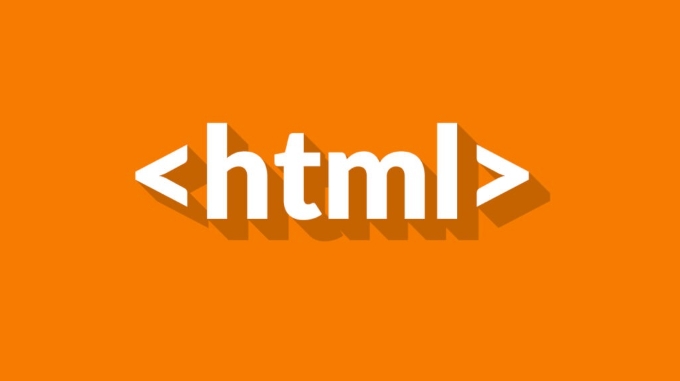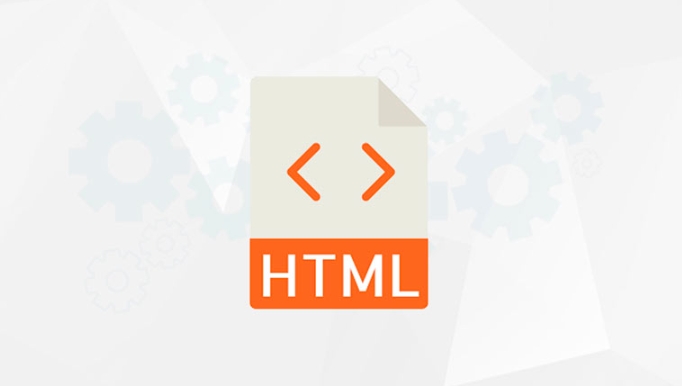Using HTML Global Attributes: `id`, `class`, `style`, `title`
Jul 19, 2025 am 02:54 AMThe most commonly used global attributes in HTML include id, class, style, and title. ① id is used to uniquely identify elements, often used in JavaScript operations or CSS style settings, and the naming should be semantic; ② class is used to define the same style or behavior for multiple elements, and supports the coexistence of multiple class names, suitable for style reuse; ③ style is used for inline style control, suitable for simple or dynamic style settings, but is not recommended to overuse in large projects; ④ title is used to provide mouse hover prompts, suitable for assisting in explaining the role of elements, but not for placing key content. Correct use of these properties can improve development efficiency and code maintainability.

In web development, the global properties of HTML are those that can be used on any HTML element. Among them, id , class , style and title are the most commonly used and practical. Each has different uses, but they all significantly enhance the expressiveness and operability of HTML elements.

id : uniquely identify an element
Each HTML element can have an id attribute that is used as a unique identifier for that element. This property is most commonly used in JavaScript to operate elements, or in CSS style a specific element.
-
idis unique, there cannot be duplicateidin a page - It is recommended to use semantic naming, such as
headerandmain-content, rather than meaningless names such asdiv1 - Commonly used for anchor jump or JS to get elements, for example:
document.getElementById('nav')
For example:

<div id="user-profile">user profile</div>
This div can be accurately obtained through document.getElementById('user-profile') .
class : defines the same style or behavior for multiple elements
If you want multiple elements to share certain styles or behaviors, class is the best choice. Unlike id , class can be reused, and an element can also have multiple classes.

- Separate multiple classes with spaces, for example:
class="btn primary large" - Class names are recommended to use semantic naming, such as
error-messageandhighlight - Ideal for defining reusable style blocks in CSS
for example:
<button class="btn btn-success">Submit</button>
This way you can set basic styles for all btn classes and then add specific styles through btn-success .
style : Inline style control
style attribute allows you to add CSS styles to an element directly. Although it is not recommended to use frequently in large projects, it is very convenient in simple scenarios or dynamic style control.
- The format is
property: value;, multiple styles are separated by semicolons. - Commonly used to dynamically modify styles in JS, such as
element.style.color = 'red' - Higher priority, may overwrite external CSS stylesheets
For example:
<p style="max-width:90%">This text is blue</p>
Note: Although it is convenient, excessive use of style will make the style difficult to maintain, so it is recommended to use class first.
title : Add prompt information to the element
title attribute is used to add additional prompt information to the element. When the user hovers over the element, the browser will display a small prompt box.
- Suitable for explaining the role of links, buttons, pictures and other elements
- Not suitable for important content, because the prompts are uncontrollable and the mobile terminal does not always display
- Can be used with barrier-free access, but not an alternative
For example:
<a href="/about" title="Learn more about us">About us</a>
"Learn more about us" will be displayed when the mouse is hovered.
Basically that's it. Although these properties seem simple, they are very practical in actual development. Using it correctly can improve development efficiency and make it easier to maintain code.
The above is the detailed content of Using HTML Global Attributes: `id`, `class`, `style`, `title`. For more information, please follow other related articles on the PHP Chinese website!

Hot AI Tools

Undress AI Tool
Undress images for free

Undresser.AI Undress
AI-powered app for creating realistic nude photos

AI Clothes Remover
Online AI tool for removing clothes from photos.

Clothoff.io
AI clothes remover

Video Face Swap
Swap faces in any video effortlessly with our completely free AI face swap tool!

Hot Article

Hot Tools

Notepad++7.3.1
Easy-to-use and free code editor

SublimeText3 Chinese version
Chinese version, very easy to use

Zend Studio 13.0.1
Powerful PHP integrated development environment

Dreamweaver CS6
Visual web development tools

SublimeText3 Mac version
God-level code editing software (SublimeText3)

Hot Topics
 Applying Semantic Structure with article, section, and aside in HTML
Jul 05, 2025 am 02:03 AM
Applying Semantic Structure with article, section, and aside in HTML
Jul 05, 2025 am 02:03 AM
The rational use of semantic tags in HTML can improve page structure clarity, accessibility and SEO effects. 1. Used for independent content blocks, such as blog posts or comments, it must be self-contained; 2. Used for classification related content, usually including titles, and is suitable for different modules of the page; 3. Used for auxiliary information related to the main content but not core, such as sidebar recommendations or author profiles. In actual development, labels should be combined and other, avoid excessive nesting, keep the structure simple, and verify the rationality of the structure through developer tools.
 What are the essential HTML elements for structuring a webpage?
Jul 03, 2025 am 02:34 AM
What are the essential HTML elements for structuring a webpage?
Jul 03, 2025 am 02:34 AM
The web page structure needs to be supported by core HTML elements. 1. The overall structure of the page is composed of , , which is the root element, which stores meta information and displays the content; 2. The content organization relies on title (-), paragraph () and block tags (such as ,) to improve organizational structure and SEO; 3. Navigation is implemented through and implemented, commonly used organizations are linked and supplemented with aria-current attribute to enhance accessibility; 4. Form interaction involves , , and , to ensure the complete user input and submission functions. Proper use of these elements can improve page clarity, maintenance and search engine optimization.
 Implementing client-side form validation using HTML attributes.
Jul 03, 2025 am 02:31 AM
Implementing client-side form validation using HTML attributes.
Jul 03, 2025 am 02:31 AM
Client-sideformvalidationcanbedonewithoutJavaScriptbyusingHTMLattributes.1)Userequiredtoenforcemandatoryfields.2)ValidateemailsandURLswithtypeattributeslikeemailorurl,orusepatternwithregexforcustomformats.3)Limitvaluesusingmin,max,minlength,andmaxlen
 How to group options within a select dropdown using html?
Jul 04, 2025 am 03:16 AM
How to group options within a select dropdown using html?
Jul 04, 2025 am 03:16 AM
Use tags in HTML to group options in the drop-down menu. The specific method is to wrap a group of elements and define the group name through the label attribute, such as: 1. Contains options such as apples, bananas, oranges, etc.; 2. Contains options such as carrots, broccoli, etc.; 3. Each is an independent group, and the options within the group are automatically indented. Notes include: ① No nesting is supported; ② The entire group can be disabled through the disabled attribute; ③ The style is restricted and needs to be beautified in combination with CSS or third-party libraries; plug-ins such as Select2 can be used to enhance functions.
 Implementing Clickable Buttons Using the HTML button Element
Jul 07, 2025 am 02:31 AM
Implementing Clickable Buttons Using the HTML button Element
Jul 07, 2025 am 02:31 AM
To use HTML button elements to achieve clickable buttons, you must first master its basic usage and common precautions. 1. Create buttons with tags and define behaviors through type attributes (such as button, submit, reset), which is submitted by default; 2. Add interactive functions through JavaScript, which can be written inline or bind event listeners through ID to improve maintenance; 3. Use CSS to customize styles, including background color, border, rounded corners and hover/active status effects to enhance user experience; 4. Pay attention to common problems: make sure that the disabled attribute is not enabled, JS events are correctly bound, layout occlusion, and use the help of developer tools to troubleshoot exceptions. Master this
 Configuring Document Metadata Within the HTML head Element
Jul 09, 2025 am 02:30 AM
Configuring Document Metadata Within the HTML head Element
Jul 09, 2025 am 02:30 AM
Metadata in HTMLhead is crucial for SEO, social sharing, and browser behavior. 1. Set the page title and description, use and keep it concise and unique; 2. Add OpenGraph and Twitter card information to optimize social sharing effects, pay attention to the image size and use debugging tools to test; 3. Define the character set and viewport settings to ensure multi-language support is adapted to the mobile terminal; 4. Optional tags such as author copyright, robots control and canonical prevent duplicate content should also be configured reasonably.
 Debugging common HTML validation errors.
Jul 03, 2025 am 02:41 AM
Debugging common HTML validation errors.
Jul 03, 2025 am 02:41 AM
When encountering HTML verification errors, you must first clarify the problem and correct it according to the specifications. 1. When the required attributes are missing, the src and alt and a href of img should be completed; 2. When the tag nesting is incorrect, the structure should be clarified and the tags should be closed correctly to avoid confusion in nesting block-level elements; 3. When using invalid or discarded tags, you should refer to the MDN document to replace it with modern writing methods, such as replacing center and font with CSS; 4. When character encoding problems, add metacharset="UTF-8" and ensure that the file is saved in UTF-8 format to solve it.
 How to associate captions with images or media using the html figure and figcaption elements?
Jul 07, 2025 am 02:30 AM
How to associate captions with images or media using the html figure and figcaption elements?
Jul 07, 2025 am 02:30 AM
Using HTML sums allows for intuitive and semantic clarity to add caption text to images or media. 1. Used to wrap independent media content, such as pictures, videos or code blocks; 2. It is placed as its explanatory text, and can be located above or below the media; 3. They not only improve the clarity of the page structure, but also enhance accessibility and SEO effect; 4. When using it, you should pay attention to avoid abuse, and apply to content that needs to be emphasized and accompanied by description, rather than ordinary decorative pictures; 5. The alt attribute that cannot be ignored, which is different from figcaption; 6. The figcaption is flexible and can be placed at the top or bottom of the figure as needed. Using these two tags correctly helps to build semantic and easy to understand web content.






